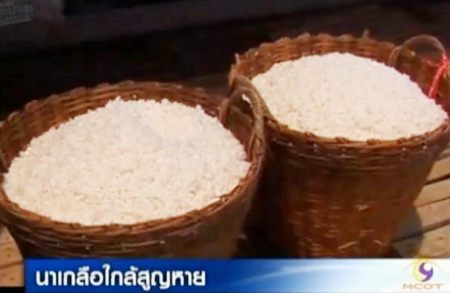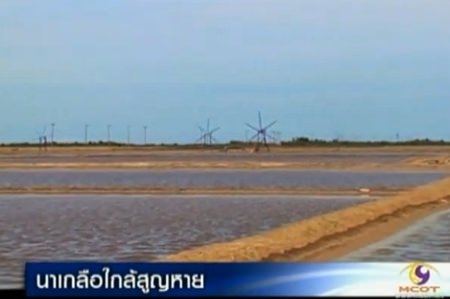Samut Sakhon is a province adjacent to Bangkok in the Southwest where most of the country’s salt farming takes place. Today there’s a sharp drop in the number of farmers entering this profession, and land previously dedicated to salt farming is being diverted to serve other commercially-viable businesses.
Boonchuay Lengbamrung, a 71-year old salt farmer, has been practising his salt farming occupation for about 30 years in the provincial seat.
He said even though he loves his career and his family has been doing it for generations, he admitted that he cannot afford higher labour wages and fluctuating salt prices which have dropped every year to as low as Bt30/cart. Such factors have helped Boonchuay decide on his career path changing from salt to shrimp and cockle farming.

“Shrimp farming can be done all year round, but salt farming can be done only six or seven months a year. The rest of the year you have to leave the salt sun dried in the air, and it’s not worth it,” said Boonchuay.
Meanwhile, Lerpong Janthong, an adviser to a salt farm co-operative in Samut Sakhon’s provincial seat, indicated that the number of salt farmers in the province has declined.
He said in Khok Kham and Pantainorasingh sub-districts alone, there used to be as many as 180 households that practised salt farming as their occupation. Now there are only 34 households left, while the size of the overall salt farming areas has been reduced by more than half.

Lerpong believed that the reasons why local residents have turned their back on salt farming could be because they are not interested in the profession and the prices of salt are unstable, discouraging salt farmers and causing them to start doing shrimp and cockle farming.
Another reason is also because investors have already bought more than 100 rai of salt farm land from farmers for housing development projects.
“Investors have bought land from several co-operative members. When they buy the land, they also take the soil of the land for reclamation at other sites. I’m concerned. The soil taken away (from a salt farm) will make the land become swamp/lowland, and when you pour water into that area, the water will ooze out,” said Lerpong.
According to official statistics, the number of all sea salt farmers in Samut Sakhon province last year was 242 households on 12,572 rai of farmland, while in nearby Samut Songkram province the figures stood at 111 households for 4,535 rai of farmland, and in adjacent Phetchaburi province further south of Samut Songkram saw 137 households doing salt farming in 9,880 rai.
The figures are worrisome, for should salt farming start to disappear from the country, Thailand might in the future have to import sea salt from abroad.




